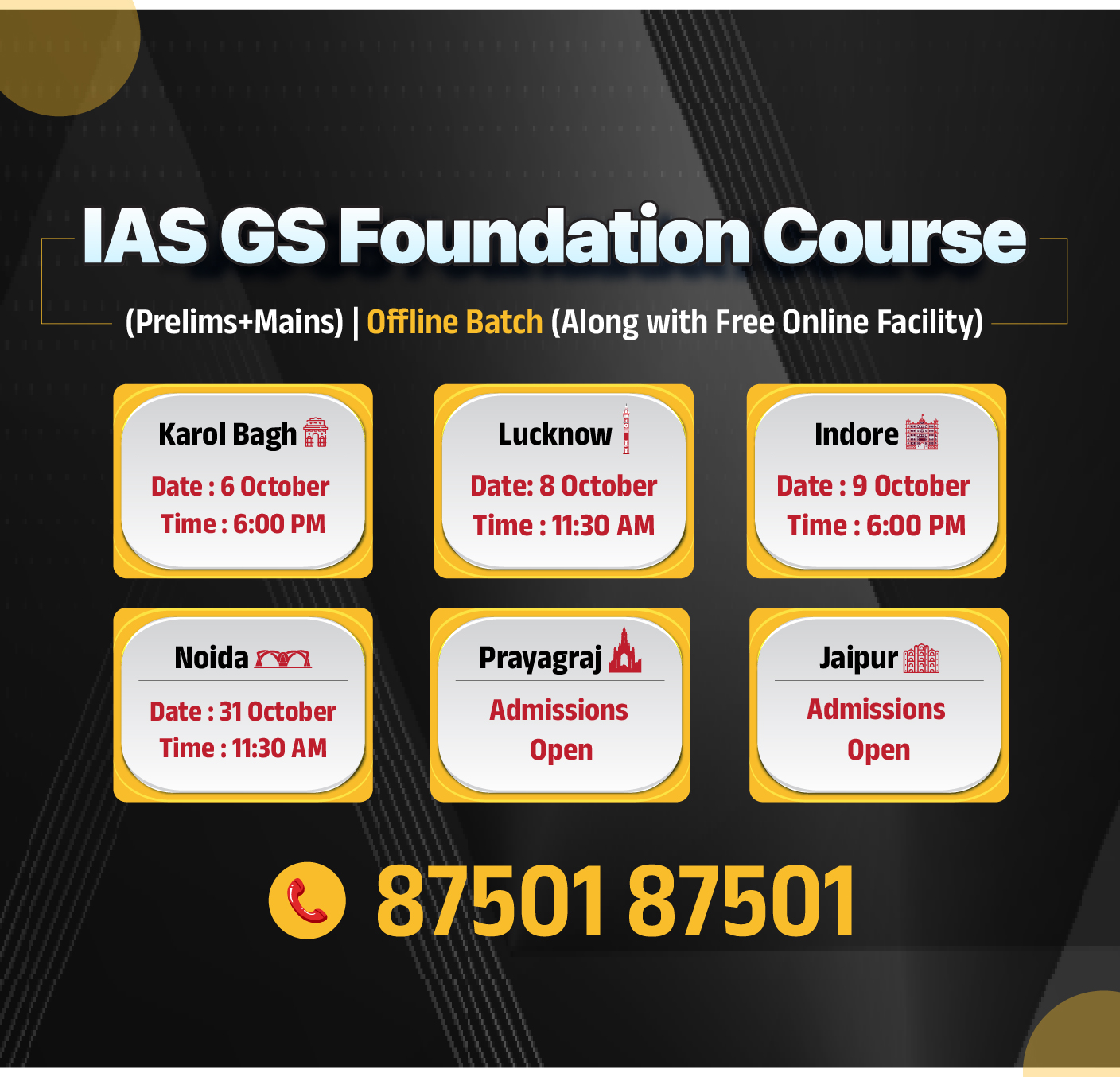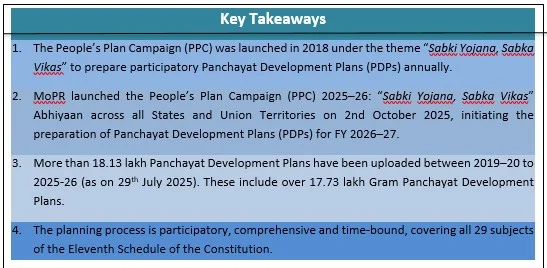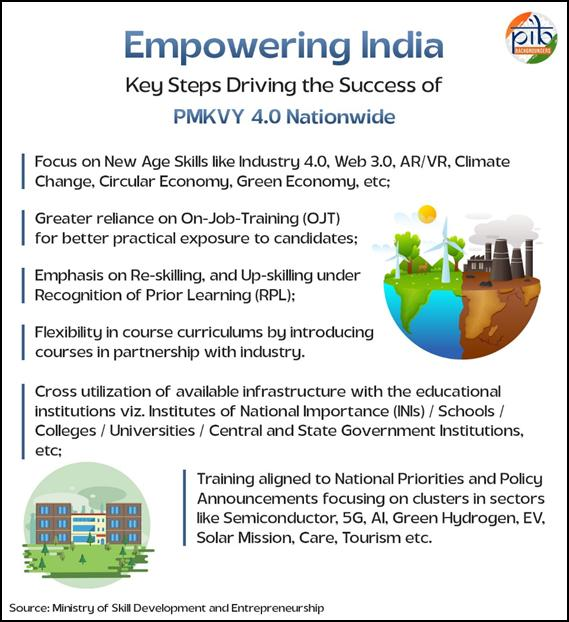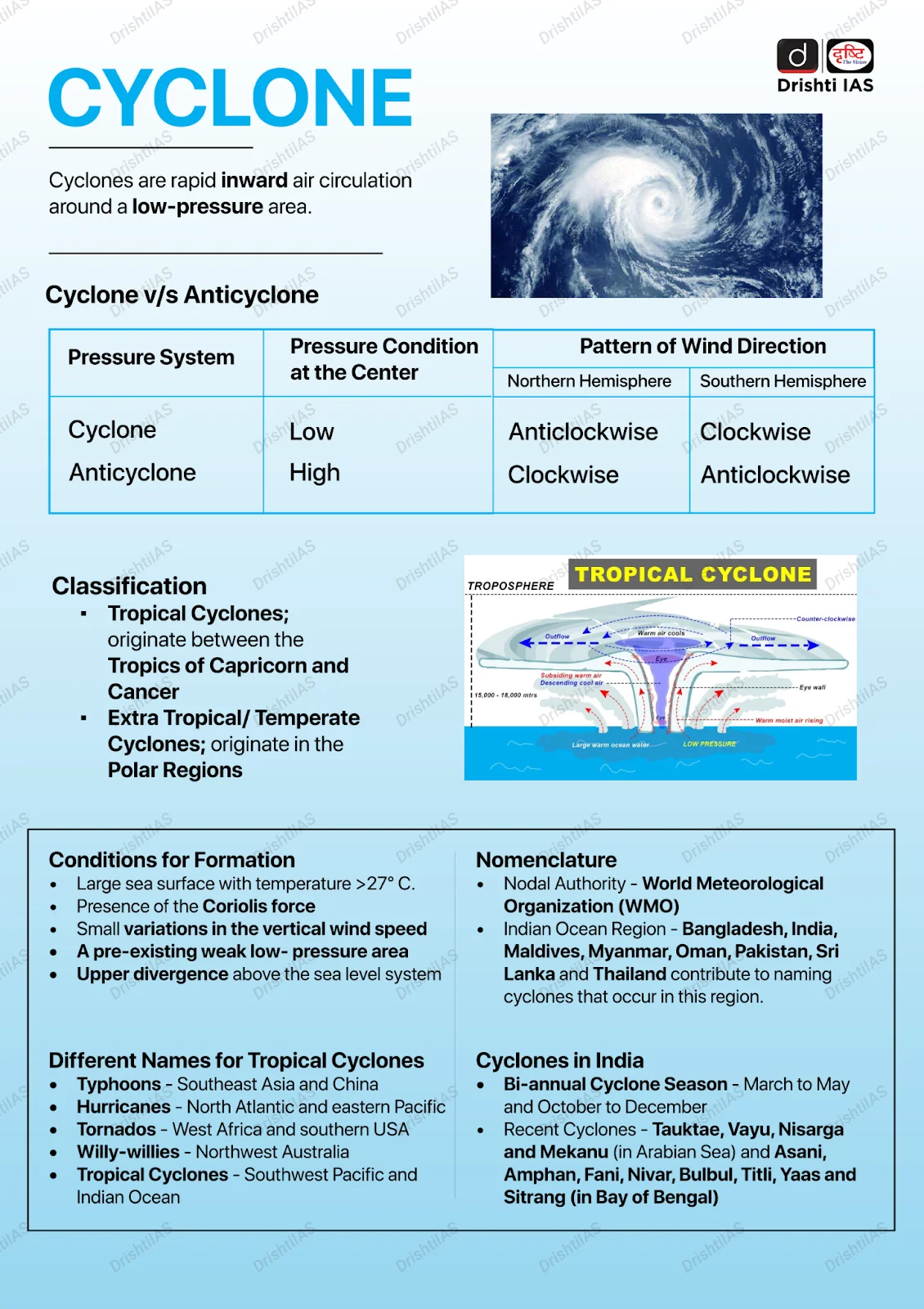Facts for UPSC Mains
Female Labour Force Participation in India
Why in News?
India’s female labour force participation rate (FLFPR) has seen a significant rise in recent years. While this seems promising for gender equality, a closer look reveals persistent challenges in employment quality, wages, and sectoral distribution for women.
What are the Trends in Female Labour Force Participation in India?
- FLFPR: FLFPR includes women who are either employed or actively seeking work. The rise in this metric does not necessarily reflect improved economic inclusion if the work is unpaid or non-remunerative.
- According to the Periodic Labour Force Survey (PLFS) (2023-24), the FLFPR declined from 31.2% in 2011–12 to 23.3% in 2017–18, marking a period of withdrawal of women from the labour market.
- However, it rose sharply to 41.7% in 2023–24, suggesting renewed female engagement in economic activity.
- Rural Women Driving the Increase: The recent increase in FLFPR has been driven largely by rural women, not by urban participation.
- Rural distress, inflation, and the need to supplement household income have compelled more women to engage in work-related activities.
- However, these are not necessarily formal or paid jobs, much of this rise is due to unpaid or self-employment roles.
- Return to Agriculture Instead of Diversification: Contrary to expectations of structural transformation, women are moving back into agriculture, not out of it.
- The share of rural women in agriculture rose from 71.1% in 2018–19 to 76.9% in 2023–24, while their presence in the industrial and service sectors declined.
- This reflects a reverse structural shift, often linked to limited non-farm opportunities for women.
- Unpaid and Self-Employment on the Rise: Women’s participation has increased mainly in unpaid family labour and own-account work, not in salaried or wage employment.
- Between 2017–18 and 2023–24, women reporting “domestic duties” declined from 57.8% to 35.7%, but “helpers in household enterprises” rose from 9.1% to 19.6%, and “own account workers and employers” from 4.5% to 14.6%.
- Thus, much of this rise represents a shift from unpaid domestic work to unpaid or low-paid self-employment.
- This indicates that increased participation has not translated into better income security or job quality.
- The rise in participation, therefore, reflects economic distress rather than genuine economic inclusion.
What Structural Constraints Continue to Undermine Women’s Labour Market Outcomes?
- Overrepresentation in Low-Productivity Sectors: A disproportionate number of women remain concentrated in agriculture and informal sectors, limiting access to high-paying, stable jobs.
- Despite India's growth in manufacturing and services, these sectors have remained male-dominated and inaccessible to many rural women.
- The Double Burden: In rural India, women’s domestic and economic roles often overlap, making it difficult to clearly classify their work as “employment.”
- Many are involved in subsistence or family-based enterprises, which are often unpaid or undercounted in official data, inflating FLFPR figures without reflecting actual empowerment.
- The Economic Survey 2024 shows women's unpaid care work contributes 3.1% to GDP.
- Such ‘invisible’ labour rarely contributes to income or asset ownership, thereby offering no pathway to empowerment.
- Many are involved in subsistence or family-based enterprises, which are often unpaid or undercounted in official data, inflating FLFPR figures without reflecting actual empowerment.
- Gender Norms and Mobility Barriers: Societal expectations around women’s roles, limited access to safe public transport, and lack of childcare infrastructure significantly curtail their mobility and job choices.
- Women often prefer home-based or nearby work, which further entrenches them in low-paying, unregulated sectors.
- Informality and Absence of Social Protection: Over 90% of employed women are in the informal sector, where there is little to no access to social security, maternity benefits, or legal safeguards.
- Such employment is typically irregular, seasonal, and dependent on family or local networks, making women’s incomes volatile and dependent.
How can India Transform Rise in FLFPR into Qualitative Economic Inclusion?
- Redesign Employment Metrics: Move beyond mere participation rates to include measures of earnings, work conditions, hours worked, and asset control.
- Integrate National Statistics Office (NSO) Time Use Surveys to capture unpaid care work and redefine what constitutes ‘productive labour’.
- Redefine ‘employment’ to reflect value-added work, not just activity.
- Targeted Formal Employment Creation: Introduce gender-sensitive incentives under schemes like Production-Linked Incentive (PLI), Make in India, and MSME support to create wage jobs for women.
- Promote labour-intensive industries (e.g., textiles, food processing) in rural areas to facilitate proximity-based employment.
- Expand MGNREGA-like schemes for women-specific tasks (e.g., afforestation, eldercare).
- Enhance Care Infrastructure and Social Services: Establish community childcare centres, elderly care services, and public cooking facilities to reduce women’s unpaid burden.
- These services act as ‘social infrastructure’ enabling higher female workforce participation.
- Invest in Skills and Digital Inclusion: Launch region-specific, demand-driven skill programs focusing on sectors like health, education, logistics, and digital services.
- Empower women to join platform and gig economy jobs with regulatory safeguards and digital access.
- Recognize and Support Self-Employed Women: Strengthen Self-Help Groups (SHGs) and link them with formal credit and market platforms.
- Provide enterprise training, e-commerce linkages, and digital financial literacy to make self-employment more sustainable.
- Challenge Deep-rooted Gender Norms: Public campaigns, school-level sensitisation, and media narratives must promote shared domestic responsibilities and female role models in non-traditional jobs.
Conclusion
India’s rising female labour force participation reflects resilience, not necessarily empowerment. True progress lies in turning this quantitative surge into quality employment, fair wages, and equal access to opportunities. Achieving this transformation is central to SDG 5: Gender Equality, ensuring women’s full and effective participation in economic life.
|
Drishti Mains Question: Rising female labour participation in India reflects resilience, not empowerment. Discuss with reference to the quality of women’s employment. |
Frequently Asked Questions (FAQs)
1. What is India’s current Female Labour Force Participation Rate (FLFPR)?
As per Periodic Labour Force Survey (PLFS) 2023–24, India’s FLFPR stands at 41.7%, up from 23.3% in 2017–18.
2. Which group has driven the rise in FLFPR?
The increase is primarily led by rural women, often entering the workforce due to economic distress and household income needs.
3. What sectors dominate women’s employment in India?
Around 76.9% of rural women remain in agriculture, with declining participation in industry and services.
4. Why is the rise in FLFPR seen as distress-driven?
Most new work is in unpaid or self-employment, indicating economic compulsion rather than formal job creation.
UPSC Civil Services Examination, Previous Year Questions (PYQs)
Prelims
Q. Disguised unemployment generally means (2013)
(a) large number of people remain unemployed
(b) alternative employment is not available
(c) marginal productivity of labour is zero
(d) productivity of workers is low
Ans: (c)
Mains
Q. Most of the unemployment in India is structural in nature. Examine the methodology adopted to compute unemployment in the country and suggest improvements. (2023)
Q. “Success of ‘Make in India’ program depends on the success of ‘Skill India’ programme and radical labour reforms.” Discuss with logical arguments. (2015)
Q. “While we flaunt India’s demographic dividend, we ignore the dropping rates of employability.” What are we missing while doing so? Where will the jobs that India desperately needs come from? Explain. (2014)
Facts for UPSC Mains
People’s Plan Campaign (PPC) 2025–26
Why in News?
The Ministry of Panchayati Raj launched the People’s Plan Campaign (PPC) 2025–26: “Sabki Yojana, Sabka Vikas” across all States and Union Territories.
- The campaign initiates the nationwide process of preparing Panchayat Development Plans (PDPs) for the Financial Year 2026–27.
What is the People’s Plan Campaign (PPC)?
- About: Launched on 2nd October 2018, the PPC (also known as jan yojana abhiyan) aims to strengthen participatory, transparent, and accountable local governance by involving citizens in preparing Panchayat Development Plans (PDPs) at the Gram, Block, and District levels.
- Objectives:
- Prepare inclusive and convergent development plans (Gram PDPs, Block PDPs, District PDPs).
- The campaign seeks to achieve effective localization of Sustainable Development Goals (SDGs) by integrating the nine thematic approaches of LSDGs into PDPs and by incorporating Village Prosperity and Resilience Plans (VPRPs) prepared by Self-Help Groups (SHGs) federations.
- To promote gender-responsive governance via Women Elected Representatives (WERs) and community participation.
- It ensures transparency through public information campaigns and Gram Sabha disclosures.
- PPC Achievement: According to the eGramSwaraj Portal, as of July 2025 more than 18.13 lakh PDPs have been uploaded from 2019–20 to 2025-26.
- PPC 2025–26 Highlights:
- Gram Sabhas will review previous GPDPs using eGramSwaraj, Meri Panchayat App, and Panchayat NIRNAY, assess progress, address delays, and prioritize unfinished projects, especially those linked to unspent Central Finance Commission grants.
- The process will be guided by the Panchayat Advancement Index (PAI), supported by SabhaSaar, with a focus on improving Panchayats’ Own Source Revenue (OSR) and enhancing community participation.
- The campaign focuses on tribal empowerment via Adi Karmayogi Abhiyaan, enhancing transparency, accountability, and inclusive rural development.
- Gram Sabhas will review previous GPDPs using eGramSwaraj, Meri Panchayat App, and Panchayat NIRNAY, assess progress, address delays, and prioritize unfinished projects, especially those linked to unspent Central Finance Commission grants.
What is the Role of Panchayats in India’s Development Framework?
- Constitutional Obligation: The Gram Panchayat, as the foundational unit of the three-tier Panchayati Raj system, was institutionalized by the 73rd Constitutional Amendment Act, 1992, to strengthen participatory democracy and decentralized governance in rural India.
- Article 243G empowers Panchayats to plan and implement programs for economic development and social justice, making them autonomous units of local self-government.
- Service Delivery & Welfare: Panchayats are directly responsible for providing essential infrastructure and services, including water supply, sanitation, roads, street lighting, health, education, and nutrition, and for implementing welfare schemes and community development programs.
- Development Planning: Annual Gram Panchayat Development Plans (GPDPs) are prepared in participatory Gram Sabhas, ensuring local priorities are incorporated.
- Plans are comprehensive, covering the 29 subjects of the Eleventh Schedule, and resource-aligned, leveraging Central and State funds.
- Block (BPDPs) and District Panchayat Development Plans (DPDPs) ensure convergence, coordination, and effective scaling of initiatives.
- People's Planning: Self-Help Groups (SHGs) contribute through Village Prosperity and Resilience Plans (VPRPs), embedding community-driven, gender-sensitive, and socially inclusive development approaches.
- Localization of SDGs: Panchayats play a key role by integrating the nine thematic approaches of SDGs (poverty free, healthy, child friendly, water sufficient, clean & green, self-sufficient infrastructure, socially secured, good governance and women friendly villages) into local plans.
- By incorporating these SDG themes, Panchayats act as essential instruments to translate national and global development goals into measurable and impactful outcomes at the grassroots level.
What are the Key Challenges and Actionable Strategies for Improving the Effectiveness of PPC?
|
Challenges |
Actionable Strategies |
|
|
|
|
|
|
|
|
Conclusion
The People’s Plan Campaign is strengthening decentralization by combining community participation with digital planning. PPC 2025–26 can make Panchayati Raj more transparent, inclusive, and accountable, driving equitable rural growth and advancing India’s vision of Viksit Bharat by 2047.
|
Drishti Mains Question: How does the People’s Plan Campaign strengthen participatory governance at the Panchayat level? |
Frequently Asked Questions (FAQs):
1. What is the People’s Plan Campaign (PPC)?
The PPC, launched in 2018, is a nationwide initiative promoting participatory, transparent, and accountable local governance through Gram, Block, and District Panchayat Development Plans.
2. Which constitutional provision empowers Panchayats under PPC?
Article 243G of the 73rd Constitutional Amendment Act, 1992 empowers Panchayats to plan and implement programs for economic development and social justice at the local level.
3. What digital tools are used in PPC 2025–26 for planning and monitoring?
Platforms like eGramSwaraj, Panchayat NIRNAY, Meri Panchayat App, along with Panchayat Advancement Index (PAI) and SabhaSaar, support planning, progress assessment, and community engagement.
UPSC Civil Services Examination, Previous Year Questions (PYQs)
Prelims
Q1. Local self-government can be best explained as an exercise in (2017)
(a) Federalism
(b) Democratic decentralisation
(c) Administrative delegation
(d) Direct democracy
Ans: (b)
Q. The fundamental object of Panchayati Raj system is to ensure which among the following? (2015)
- People’s participation in development
- Political accountability
- Democratic decentralisation
- Financial mobilisation
Select the correct answer using the code given below
(a) 1, 2 and 3 only
(b) 2 and 4 only
(c) 1 and 3 only
(d) 1, 2, 3 and 4
Ans: (c)
Mains
Q. To what extent, in your opinion, has the decentralisation of power in India changed the governance landscape at the grassroots? (2022)
Q. Assess the importance of the Panchayat system in India as a part of local government. Apart from government grants, what sources can the Panchayats look out for financing developmental projects? (2018)
Q. In absence of a well-educated and organised local level government system,`Panchayats’ and ‘Samitis’ have remained mainly political institutions and not effective instruments of governance. Critically discuss. (2015)
Important Facts For Prelims
NAVYA Initiative
Why in News?
The Nurturing Aspirations through Vocational Training for Young Adolescent Girls (NAVYA) initiative, launched under Pradhan Mantri Kaushal Vikas Yojana (PMKVY) 4.0, aims to empower adolescent girls aged 16-18 by providing them with vocational training in emerging job sectors.
What is the NAVYA Initiative?
- About: Launched on 24th June 2025, the NAVYA initiative is a collaborative effort between the Ministry of Skill Development and Entrepreneurship (MSDE) and the Ministry of Women and Child Development (MWCD).
- Currently, the initiative is being piloted in 9 districts across 9 states — Maharashtra, Gujarat, Karnataka, Punjab, Uttar Pradesh, Bihar, Madhya Pradesh, Jharkhand, and Himachal Pradesh.
- These districts have been identified as ’aspirational’ by NITI Aayog.
- Currently, the initiative is being piloted in 9 districts across 9 states — Maharashtra, Gujarat, Karnataka, Punjab, Uttar Pradesh, Bihar, Madhya Pradesh, Jharkhand, and Himachal Pradesh.
- Target: The initiative will cover 3850 girls in 27 Aspirational and North-Eastern districts in 19 states, and currently it is being piloted across 9 states in 9 districts.
- Key Objectives:
- Demand-Driven Training: Courses in technology, healthcare, and modern roles (e.g., AI, digital marketing) aligned with industry needs.
- Holistic Development: Modules on health, hygiene, financial literacy, life skills, and legal awareness (e.g: POSH & POCSO).
- Promote Employability and Entrepreneurship: Internships, apprenticeships, job placements, and self-employment resources.
- Gender-Inclusive Skilling: Female-friendly training spaces with stipends and flexible schedules; encourages girls in non-traditional sectors like cybersecurity.
- Bridge Education and Livelihood: Links education to sustainable livelihoods, especially in remote and Aspirational Districts.
- Significance:
- Bridges the Gender Gap: Promotes women’s participation in non-traditional skills and industries, fostering gender equality in emerging sectors.
- Targets Underserved Regions: Focuses on empowering girls from remote and vulnerable areas, ensuring equal opportunities.
- Boosts Girls’ Economic Participation: Enhances the involvement of girls in economic growth, contributing to nation-building and socio-economic development.
Pradhan Mantri Kaushal Vikas Yojana (PMKVY)
- Launched on 15th July 2015, the Pradhan Mantri Kaushal Vikas Yojana (PMKVY) promotes skill development by offering free, short-term training and monetary rewards for youth skill certification.
- PMKVY 2016-2020 expanded its sectoral and geographic reach, aligning with national initiatives like Make in India and Digital India to enhance industry relevance and youth employability.
Frequently Asked Questions (FAQs)
1. What is the NAVYA initiative?
It is a joint effort by the Ministry of Skill Development and Entrepreneurship (MSDE) and the Ministry of Women and Child Development (MWCD) to provide skill training and holistic development to adolescent girls aged 16–18 .
2. Which sectors and skills does NAVYA focus on?
NAVYA offers training in emerging and non-traditional sectors like AI-enabled services, cybersecurity, digital marketing, drone assembly, and CCTV installation.
3. How does NAVYA empower adolescent girls beyond vocational skills?
It integrates life skills, health and nutrition, financial literacy, workplace safety (POSH & POCSO awareness), to ensure holistic development and socio-economic independence.
UPSC Civil Services Examination, Previous Year Questions (PYQs)
Prelims:
Q. With reference to Pradhan Mantri Kaushal Vikas Yojana, consider the following statements: (2018)
- It is the flagship scheme of the Ministry of Labour and Employment.
- It, among other things, will also impart training in soft skills, entrepreneurship, and financial and digital literacy.
- It aims to align the competencies of the unregulated workforce of the country to the National Skill Qualification Framework.
Which of the statements given above is/are correct?
(a) 1 and 3 only
(b) 2 only
(c) 2 and 3 only
(d) 1, 2 and 3
Ans: (c)
Important Facts For Prelims
New START Treaty
Why in News?
Russia has expressed a positive response to the U.S. President’s remarks endorsing its proposal to extend adherence to the New START Treaty’s nuclear arms limitations for an additional year.
- The development comes against the backdrop of Russia’s 2023 decision to suspend its participation in the treaty, which remains the last major arms control framework between Moscow and Washington.
What is the New START Treaty?
- About: START stands for “Strategic Arms Reduction Treaty.” The original START-I was signed between the US and USSR in 1991 and came into force in 1994.
- It was replaced by the Strategic Offensive Reductions Treaty (SORT) and later the New START Treaty (Signed in 2010, entered into force in 2011, initially valid till 2021, and extended until 2026).
- It limits long-range weapons designed to influence the outcome of a war, targeting centers of power, command facilities, or critical infrastructure and ensures verifiable reductions in strategic arms.
- Russia and the US hold 87% of the world’s nuclear warheads (5,459 and 5,177 respectively), enough for multiple global destructions. New START aimed to slow the arms race, and its suspension leaves a dangerous gap.
- Arms Limitations under the New START: The treaty set verifiable limits for the US and Russia: 700 deployed ICBMs, SLBMs, and bombers, 1,550 nuclear warheads, and 800 deployed and non-deployed launchers and bombers.
- Compliance Mechanism: Verification procedures include on-site inspections by US and Russian inspection teams, data sharing, notifications, and the Bilateral Consultative Commission (BCC).
- Key Limitations:
- While the New START Treaty imposes verifiable limits on deployed strategic nuclear weapons, it does not cover non-deployed strategic or non-strategic (tactical) nuclear weapons. This exclusion leaves a significant portion of both nations’ arsenals outside the scope of arms control.
- Russia cites US projects like space-based Golden Dome interceptors and views its new intermediate-range missiles as strategic threats, while the US is concerned about Russia’s Kinzhal missiles and Avangard hypersonic glide vehicles.
Major Global Initiatives Related to Nuclear Weapons Management
- Treaty on the Non-Proliferation of Nuclear Weapons (NPT), 1968: Aims to prevent nuclear weapons spread, promote disarmament, and support peaceful nuclear energy use; recognizes five nuclear-weapon states (NWS): US, Russia, UK, France, China.
- Comprehensive Nuclear-Test-Ban Treaty (CTBT), 1996: Prohibits all nuclear explosions for testing purposes. (not yet entered into force).
- Treaty on the Prohibition of Nuclear Weapons (TPNW), 2017: Bans the use, possession, testing, and transfer of nuclear weapons under international law.
Frequently Asked Questions (FAQs)
1. What is the New START Treaty?
The New START Treaty is a strategic arms control agreement between the US and Russia, signed in 2010 and enforced in 2011, limiting deployed ICBMs, SLBMs, bombers, and nuclear warheads to ensure verifiable reductions in strategic arms.
2. What are the key limitations under the New START Treaty?
The treaty limits 700 deployed ICBMs, SLBMs, and bombers, 1,550 nuclear warheads, and 800 deployed/non-deployed launchers and bombers, verified through inspections, data sharing, and the Bilateral Consultative Commission.
3. Why was the New START Treaty considered significant for global security?
It was significant as the last major treaty ensuring verifiable reductions and transparency between the two nations holding 87% of global nuclear arsenals, thereby slowing the arms race and preventing miscalculation.
UPSC Civil Services Examination, Previous Year Questions (PYQs)
Q. The “New START” treaty was in the news. What is this treaty? (2011)
(a) It is a bilateral strategic nuclear arms reduction treaty between the USA and the Russian Federation.
(b) It is a multilateral energy security cooperation treaty among the members of the East Asia Summit.
(c) It is a treaty between the Russian Federation and the European Union for energy security cooperation.
(d) It is a multilateral cooperation treaty among the BRICS countries for the promotion of trade
Ans: (a)


Rapid Fire
Phosphine on Brown Dwarf Wolf 1130C
For the first time, the James Webb Space Telescope (JWST) has detected phosphine, a molecule linked to biological processes on Earth, in the atmosphere of the brown dwarf Wolf 1130C.
- About Wolf 1130C: Wolf 1130C is a brown dwarf in the constellation Cygnus.
- A brown dwarf is a celestial object with a mass between a planet and a star. While it forms like a star, it cannot sustain hydrogen fusion in its core, earning it the term “failed star.”
- On Earth, phosphine is a potential biosignature produced by living organisms, but brown dwarfs are not considered habitable.
- Phosphine may be formed due to the brown dwarf’s metal-poor, oxygen-deficient atmosphere or from nuclear reactions in its white dwarf companion.
- In 2020, scientists detected phosphine in the atmosphere of Venus.
Phosphine
- About: Phosphine (PH₃) is a molecule consisting of one phosphorus atom bonded to three hydrogen atoms and is colorless, flammable highly toxic to humans.
- Production:
- Biological: On planets like Earth and Venus, phosphine is typically produced by living organisms. Anaerobic bacteria in oxygen-poor environments like landfills, marshes, and animal guts produce phosphine by combining phosphate with hydrogen.
- Non-Biological: It can be synthesized by reacting white phosphorus with alkali (like sodium hydroxide) or by hydrolysis of metal phosphides.
- Applications: It is used as a fumigant pesticide to protect stored grains and serves as a dopant in microchip fabrication.
| Read More: Phosphine on Venus: A Sign of Life |


Rapid Fire
Cyclone Shakhti
Cyclone Shakhti, a name given by Sri Lanka, which originated in the Arabian Sea, has strengthened into a severe cyclonic storm (SCS) with wind speeds reaching 100 kmph.
Cyclones
- About: Cyclones are fast air circulations around low-pressure areas, rotating anticlockwise in the Northern Hemisphere and clockwise in the Southern, often causing storms and severe weather.
- Cyclone Formation in Arabian Sea: The Arabian Sea, particularly its central and southern parts, serves as a warm pool with ideal Sea Surface Temperature (SST) (at least 27°C) favourable for cyclone formation.
- Also, the Madden-Julian Oscillation (MJO) is a large weather system that moves eastward around the tropics.
- When its active phase is over the Arabian Sea, it creates favorable conditions for cyclones — including more moisture, low wind shear, and strong upward air movement.
- Also, the Madden-Julian Oscillation (MJO) is a large weather system that moves eastward around the tropics.
- Classification of Cyclones: IMD classifies low-pressure systems in the Bay of Bengal and Arabian Sea by damage potential, following World Meteorological Organization (WMO) guidelines.
- Naming of Cyclones: The WMO/ESCAP (United Nations Economic and Social Commission for Asia and the Pacific) Panel on Tropical Cyclones, which includes 13 North Indian Ocean countries, manages cyclone naming for the Arabian Sea and Bay of Bengal.
- The panel has a pre-set list of names submitted by 13 countries to be used sequentially.
- Names are chosen in order, column by column, regardless of where the cyclone forms.
| Read More: Cyclones |
Rapid Fire
Toxic Chemical Diethylene Glycol in Cough Syrup
The Food and Drugs Administration (FDA), Bhopal, found that Coldrif cough syrup contained 46.28% Diethylene Glycol (DEG), far exceeding the permissible limit of 0.1%. The finding led to state-level bans and triggered nationwide regulatory action under the Drugs and Cosmetics Act, 1940.
- Diethylene Glycol (DEG): It is a colourless, sweet-tasting industrial chemical commonly used in brake fluids and antifreeze.
- It is misused as a cheap substitute solvent in drug production owing to its close physical similarity to safe pharmaceutical compounds.
- Consumption of DEG can cause abdominal pain, vomiting, kidney failure, and nervous system damage, and may be fatal at high doses.
- Drugs and Cosmetics Act, 1940: It regulates the import, manufacture, sale, and distribution of drugs and cosmetics in India through licences and permits.
- Its main aim is to ensure that marketed drugs and cosmetics are safe, effective, and meet national standards.
- The Drugs and Cosmetics Rules, 1945, complement the Act by classifying medications into schedules and providing guidelines for their storage, sale, presentation, and prescription.
| Read more: WHO Issues Alert for Substandard Cough Syrups Produced in India |










